Giant pandas, those beloved black and white bears from China, have captivated our hearts not just with their adorable appearance but also with their clumsy antics. Videos of pandas tumbling, rolling, and falling from trees have amassed millions of views online, turning these endangered animals into internet sensations. But have you ever wondered why pandas seem so awkward and prone to tumbling? The answer lies in a fascinating combination of evolutionary biology, anatomy, diet, and behavior that makes these bears uniquely prone to comedic mishaps. This article explores the scientific and entertaining reasons behind pandas’ famous clumsiness and reveals why these tumbles might actually serve an important purpose in panda society.
The Evolutionary Trade-offs of Being a Panda

Giant pandas (Ailuropoda melanoleuca) occupy a unique evolutionary niche. Despite being classified as carnivores in the bear family Ursidae, pandas evolved to become specialized bamboo eaters approximately 2-3 million years ago. This dietary shift required significant anatomical adaptations, including the famous “pseudo-thumb” – an enlarged wrist bone that helps them grip bamboo stems. However, this evolutionary path came with trade-offs that contribute to their tumbling tendencies.
Unlike their carnivorous bear relatives who developed agility for hunting, pandas sacrificed some coordination and agility to accommodate their specialized bamboo diet. Their body structure, optimized for bamboo processing rather than graceful movement, makes them inherently more prone to awkward movements and balance issues. This evolutionary compromise helps explain why a panda might struggle with activities that other bears perform with ease.
The Bamboo Diet Dilemma

The giant panda’s almost exclusive bamboo diet plays a significant role in their tumbling behavior. Bamboo is remarkably low in nutrients – pandas must consume 20-40 pounds daily just to meet their energy needs, spending 10-16 hours eating. This low-energy diet means pandas conserve energy whenever possible, moving slowly and deliberately rather than with precision and grace.
Additionally, bamboo’s low caloric value limits the energy available for developing and maintaining complex motor skills. The panda’s body prioritizes energy for digestion over physical coordination. Scientists have noted that after large meals, pandas become particularly prone to tumbling as they become more lethargic and less coordinated, sometimes even falling asleep in awkward positions or during movement.
The Anatomy of Awkwardness
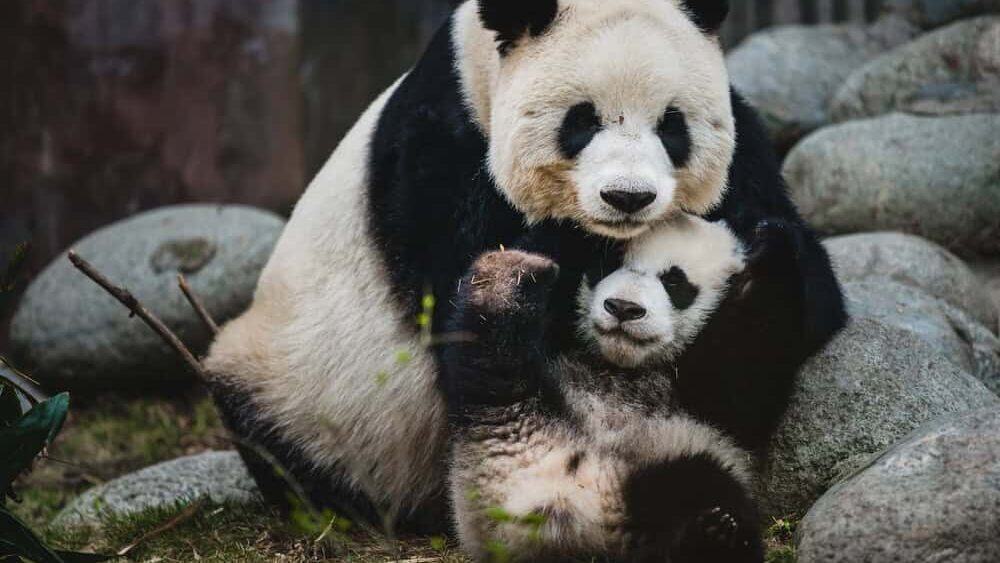
A closer look at panda anatomy reveals several physical factors contributing to their tumbling tendencies. Giant pandas have disproportionately large heads relative to their bodies – a feature that makes them adorable but creates balance challenges. This top-heavy structure shifts their center of gravity higher than in most bears, making them more prone to tipping over, especially when moving on uneven terrain.
Their unique skeletal structure also plays a role. Pandas have flat, wide feet designed for bamboo processing rather than agile movement. The famous “sixth finger” or pseudo-thumb, while excellent for gripping bamboo, actually makes their paws less dexterous for other movements. These anatomical quirks combine to create a bear that, while perfectly adapted to its ecological niche, appears comically maladroit when navigating its environment.
The Science of Panda Balance

Research into panda physiology has revealed interesting insights about their balance mechanisms. Studies from the China Conservation and Research Center for the Giant Panda suggest that pandas have a less developed vestibular system – the sensory system responsible for balance and spatial orientation – compared to other bears. This may be another evolutionary trade-off related to their sedentary, bamboo-focused lifestyle.
Additionally, pandas have relatively short legs for their stocky bodies. While this lower center of gravity should theoretically improve stability, it actually makes recovery from a stumble more difficult. Once a panda starts to fall, their short limbs and rotund bodies make it challenging to quickly correct their position. Instead of regaining balance gracefully, they often complete the fall – resulting in those adorable tumbles that delight viewers worldwide.
Baby Pandas: Masters of the Tumble
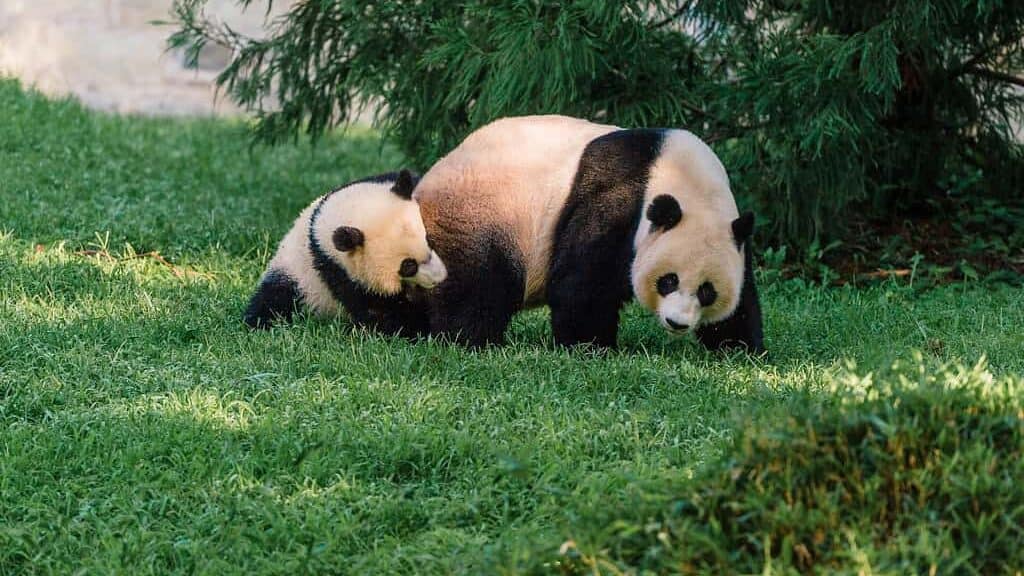
If adult pandas seem clumsy, baby pandas elevate tumbling to an art form. Newborn pandas are remarkably underdeveloped, weighing just 3-5 ounces at birth. Their motor skills develop slowly, and they don’t begin walking until they’re about three months old. This delayed development period results in a prolonged learning phase where tumbling, rolling, and falling are constant occurrences.
Panda cubs are particularly prone to tumbling because they must learn to navigate with their unique body structure. Their oversized heads and underdeveloped muscles make even basic movements challenging. Wildlife researchers have observed that panda cubs fall an average of 30 times more frequently than other bear species during their first year of life. These early tumbles serve an important developmental purpose, helping cubs build muscle strength and coordination skills essential for adult life.
The Social Function of Tumbling
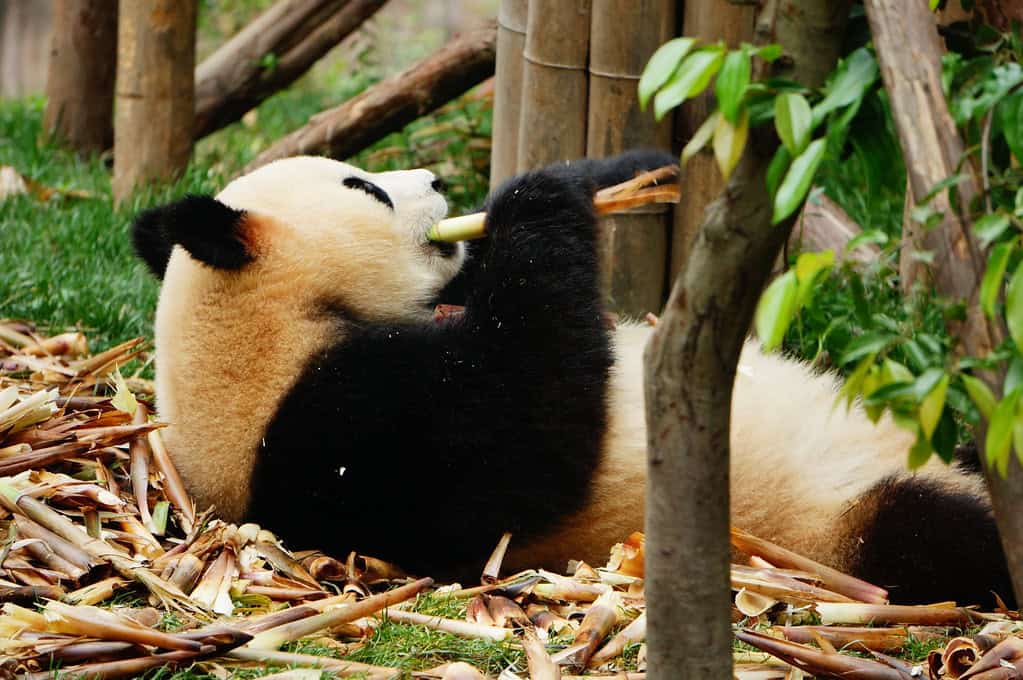
Surprisingly, tumbling may serve important social functions in panda society. Research from the Chengdu Research Base of Giant Panda Breeding suggests that playful tumbling is a crucial form of communication and social bonding among pandas. Unlike many bear species that engage in aggressive displays, pandas have evolved more gentle social interactions, with tumbling and rolling serving as non-threatening ways to establish relationships.
Observational studies have shown that pandas often initiate play sessions with intentional tumbles. These seemingly clumsy moves signal playful intent to other pandas. The frequency of tumbling increases significantly when pandas are interacting with familiar individuals, suggesting these falls aren’t merely accidents but sometimes deliberate social signals. This discovery has changed how scientists view panda clumsiness – what looks like awkwardness to human observers may actually be sophisticated social communication.
Panda Tumbling as Stress Relief
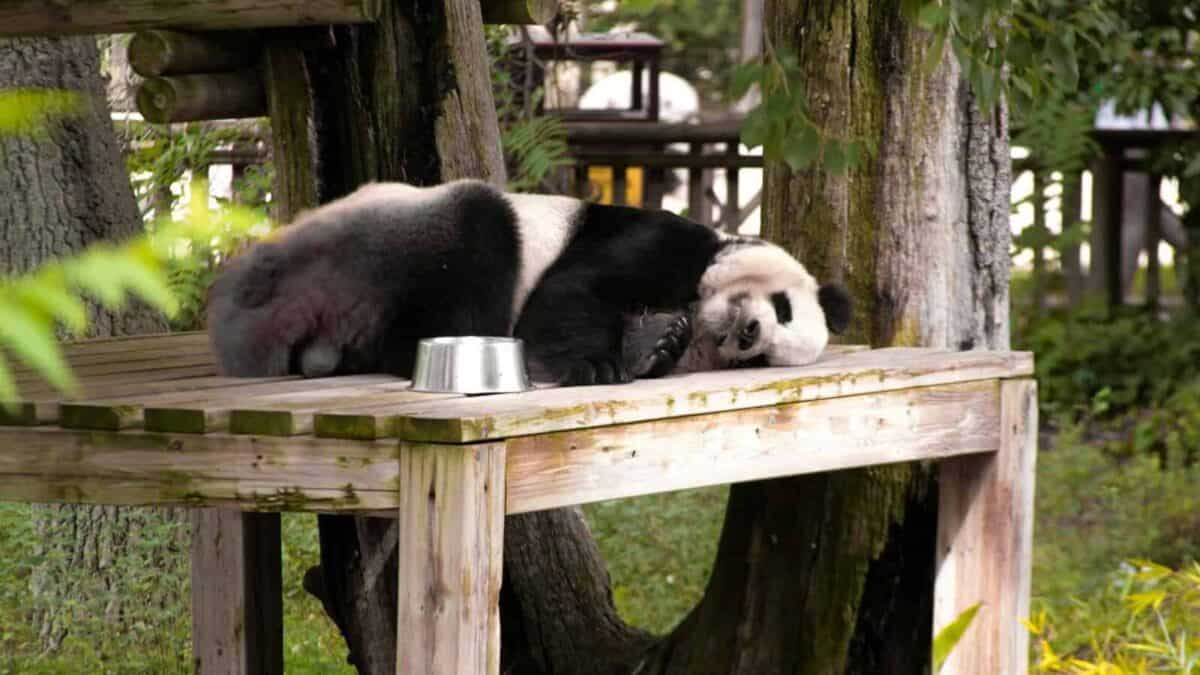
Panda tumbling also appears to serve psychological functions. Zoologists have documented increased tumbling behavior during periods of environmental change or stress. The rolling, sliding, and somersaulting behaviors release endorphins that help pandas manage stress – similar to how physical play benefits other mammals. This may explain why pandas in conservation centers often engage in more tumbling behavior than their wild counterparts.
Some researchers believe tumbling developed as a coping mechanism for the panda’s specialized ecological niche. The bamboo forest understory contains many slopes, uneven surfaces, and fallen bamboo stems. Rather than developing perfect balance for this challenging environment, pandas evolved to be resilient to falls – able to tumble without serious injury and often incorporating these movements into their regular behavioral repertoire. Their thick fat layer and relatively flexible skeleton protect them during these frequent tumbles.
The Entertainment Factor
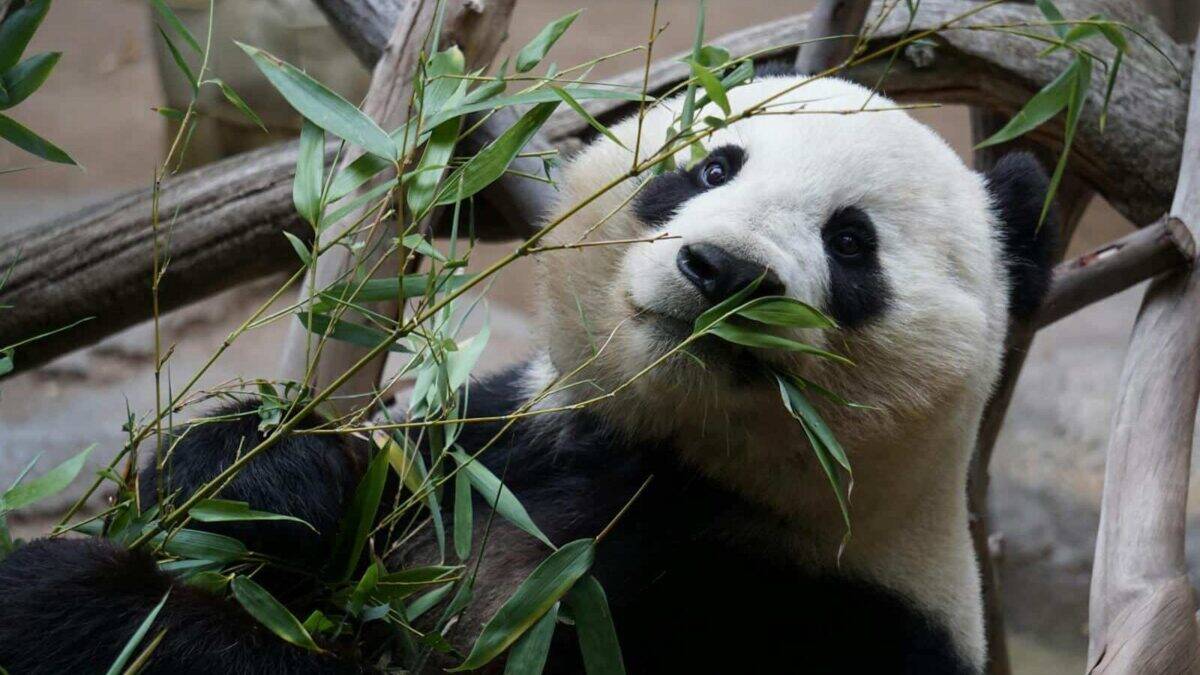
The internet’s love affair with tumbling pandas has turned these conservation ambassadors into viral sensations. Videos with titles like “Pandas Falling Off Things” regularly accumulate millions of views across social media platforms. This phenomenon has actually benefited conservation efforts, as panda tumbling videos increase public awareness and support for panda conservation initiatives.
Conservation organizations like the World Wildlife Fund have strategically used entertaining panda tumbling footage in their outreach materials. This approach has proven remarkably effective – studies show that people are significantly more likely to donate to panda conservation after viewing tumbling videos than after seeing static images or reading about the species’ endangered status. The pandas’ entertaining clumsiness has thus become an unexpected but powerful conservation tool.
The Snow Connection
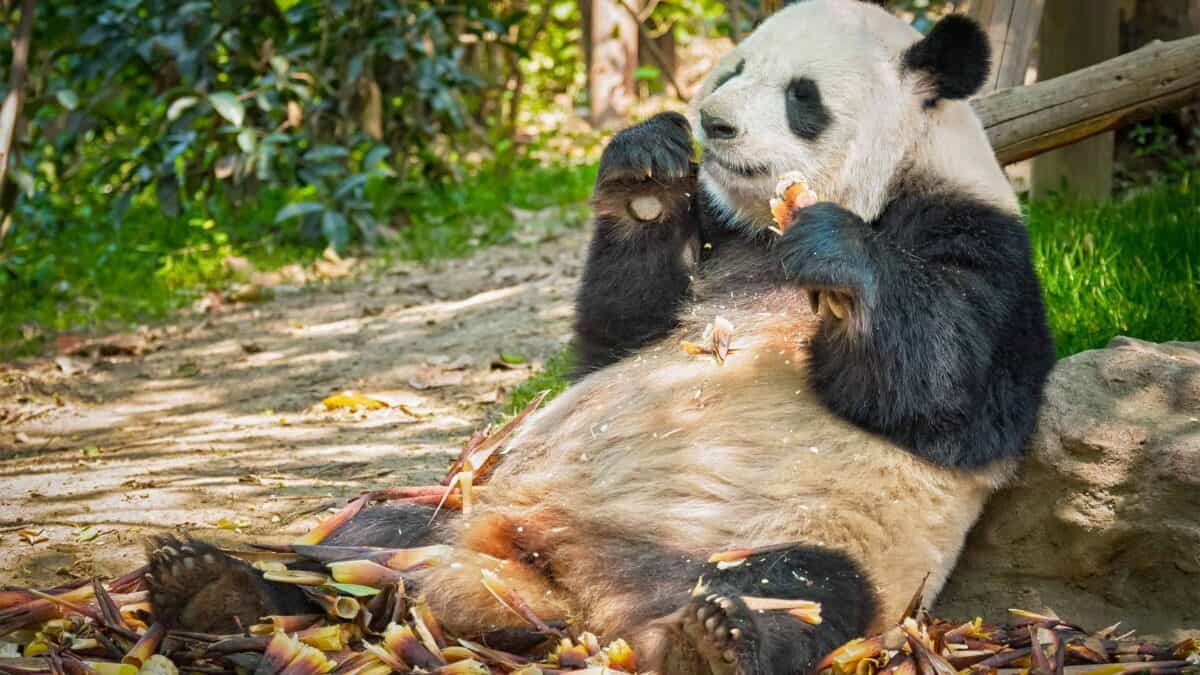
Panda tumbling reaches peak entertainment value in snowy conditions. Native to the mountainous regions of central China where seasonal snowfall is common, pandas appear particularly prone to tumbling in snow. Research from the Wolong Nature Reserve documents that pandas are 40% more likely to tumble in snowy conditions compared to dry ground.
This increased tumbling isn’t merely due to the slippery surface. Pandas actively seek out snow for play, deliberately sliding down snowy slopes and engaging in what researchers call “snow tumbling behavior.” This behavior may have evolved as both a form of environmental enrichment and an energy-efficient way to travel downhill. Rather than fighting gravity on steep snowy slopes, pandas effectively “go with the flow,” saving precious energy while also engaging in stimulating play behavior.
Captivity vs. Wild Tumbling
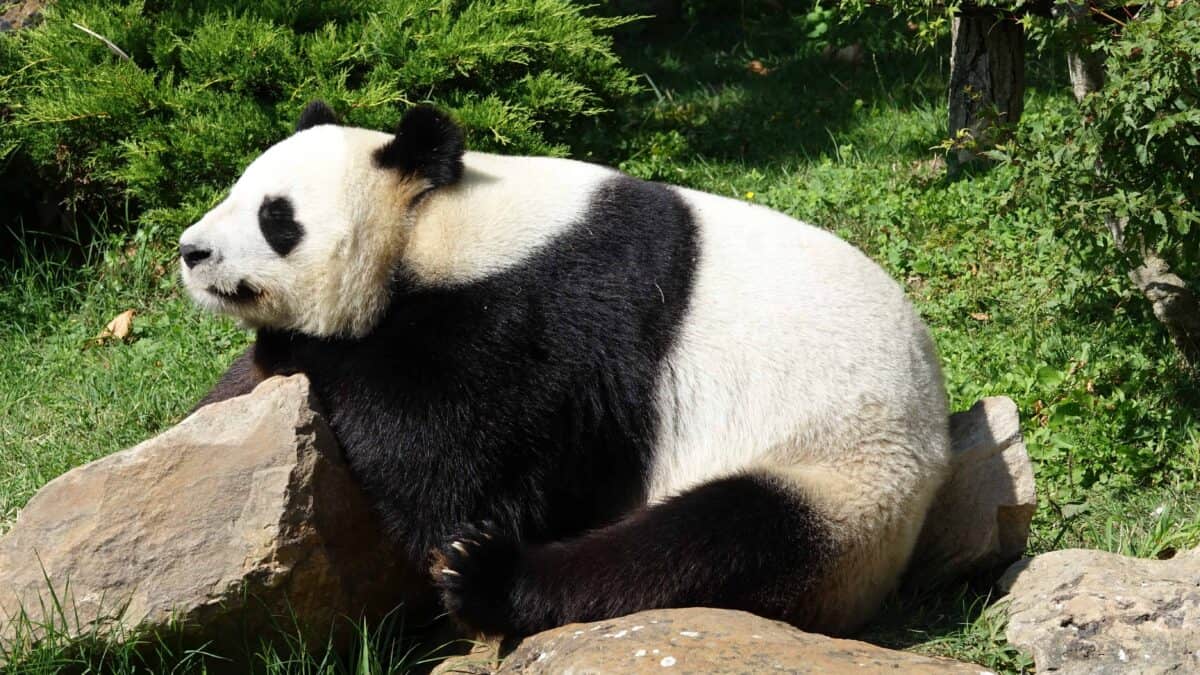
Interesting differences exist between tumbling behaviors in wild pandas versus those in conservation centers. Wild pandas tumble approximately 60% less frequently than their captive counterparts. This disparity likely stems from several factors: captive pandas typically have more free time not dedicated to foraging, have safer environments that encourage play, and often live on artificially created terrain that may challenge their natural movement patterns.
However, wild pandas still tumble significantly more than other bear species. Field researchers using camera traps in the Minshan Mountains documented wild pandas tumbling an average of 12 times daily during active periods. These observations suggest that tumbling is indeed a natural behavior, not merely a product of captivity. The difference in frequency between wild and captive settings indicates that while tumbling is natural, its prominence increases when pandas have energy to spare for play and social interaction.
Training Pandas – Can They Become Less Clumsy?
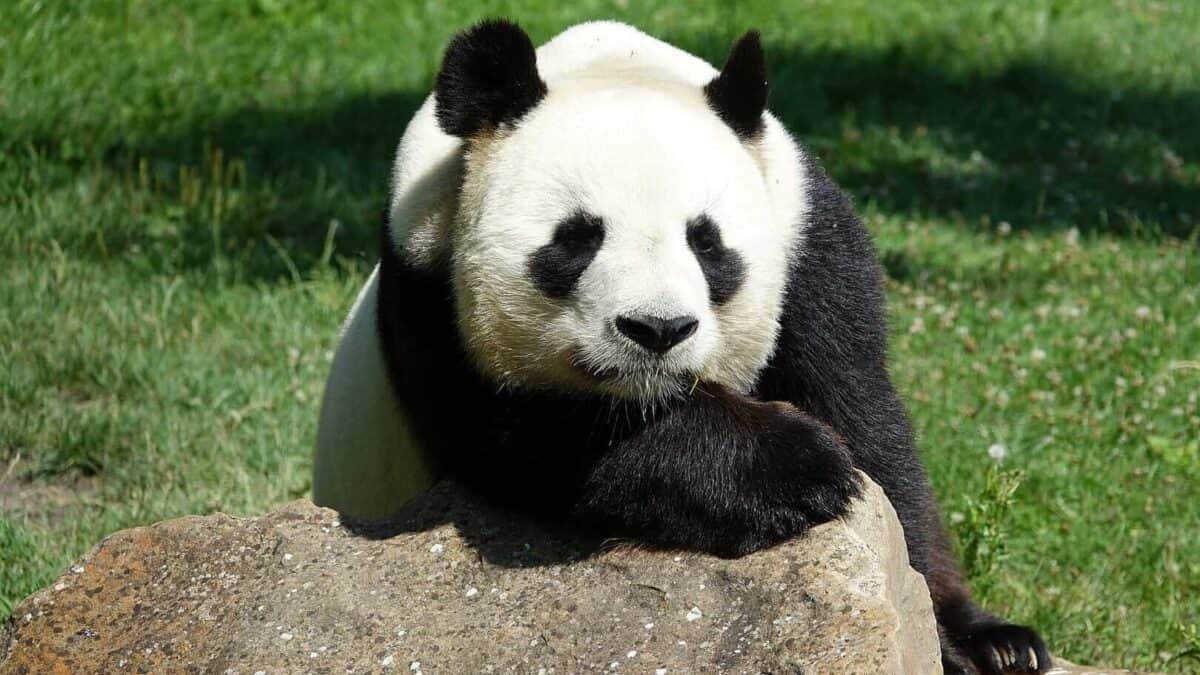
Conservation centers have experimented with environmental enrichment programs designed to improve panda coordination. These programs include obstacle courses, climbing structures, and balance exercises. Researchers at the Chengdu Research Base found that pandas who participate in these enrichment activities show modest improvements in coordination, with tumbling incidents decreasing by approximately 20% over six months of training.
However, complete elimination of tumbling behavior appears neither possible nor desirable. The physiological and anatomical factors that cause tumbling are deeply ingrained in panda biology. More importantly, tumbling serves positive functions in panda well-being and social development. Conservation experts now focus on creating environments that allow for safe tumbling rather than preventing falls altogether, recognizing that these endearing stumbles are an integral part of panda nature that should be accommodated rather than “corrected.”
Conclusion: Embracing the Tumble

The panda’s propensity for tumbling represents a fascinating intersection of evolution, physiology, behavior, and ecology. What appears to human observers as comedic clumsiness is actually a complex adaptation perfectly suited to the panda’s unique ecological niche and social needs. These tumbles reflect evolutionary trade-offs that prioritized bamboo processing over graceful movement, resulting in a bear that might not win agility contests but has successfully occupied its specialized habitat for millions of years.
Far from being a disadvantage, panda tumbling serves multiple positive functions – from social bonding and stress relief to energy conservation and play. Conservation efforts increasingly recognize and accommodate this natural behavior, creating environments where pandas can tumble safely. Perhaps most importantly, these endearing falls have created a powerful connection between pandas and humans worldwide, generating crucial support for conservation initiatives.
The next time you laugh at a video of a panda tumbling down a hill or falling from a low branch, remember that you’re witnessing not just an amusing mishap but an evolutionary marvel – a specialized adaptation that has helped this beloved species survive. In their tumbling ways, pandas remind us that sometimes in nature, what appears awkward at first glance is actually perfectly adapted for success.
- Seals Use Icebergs to Avoid Predators - August 21, 2025
- The Surprising Way Kangaroos Show Affection - August 21, 2025
- The Funny Reason Pandas Tumble So Much - August 21, 2025

